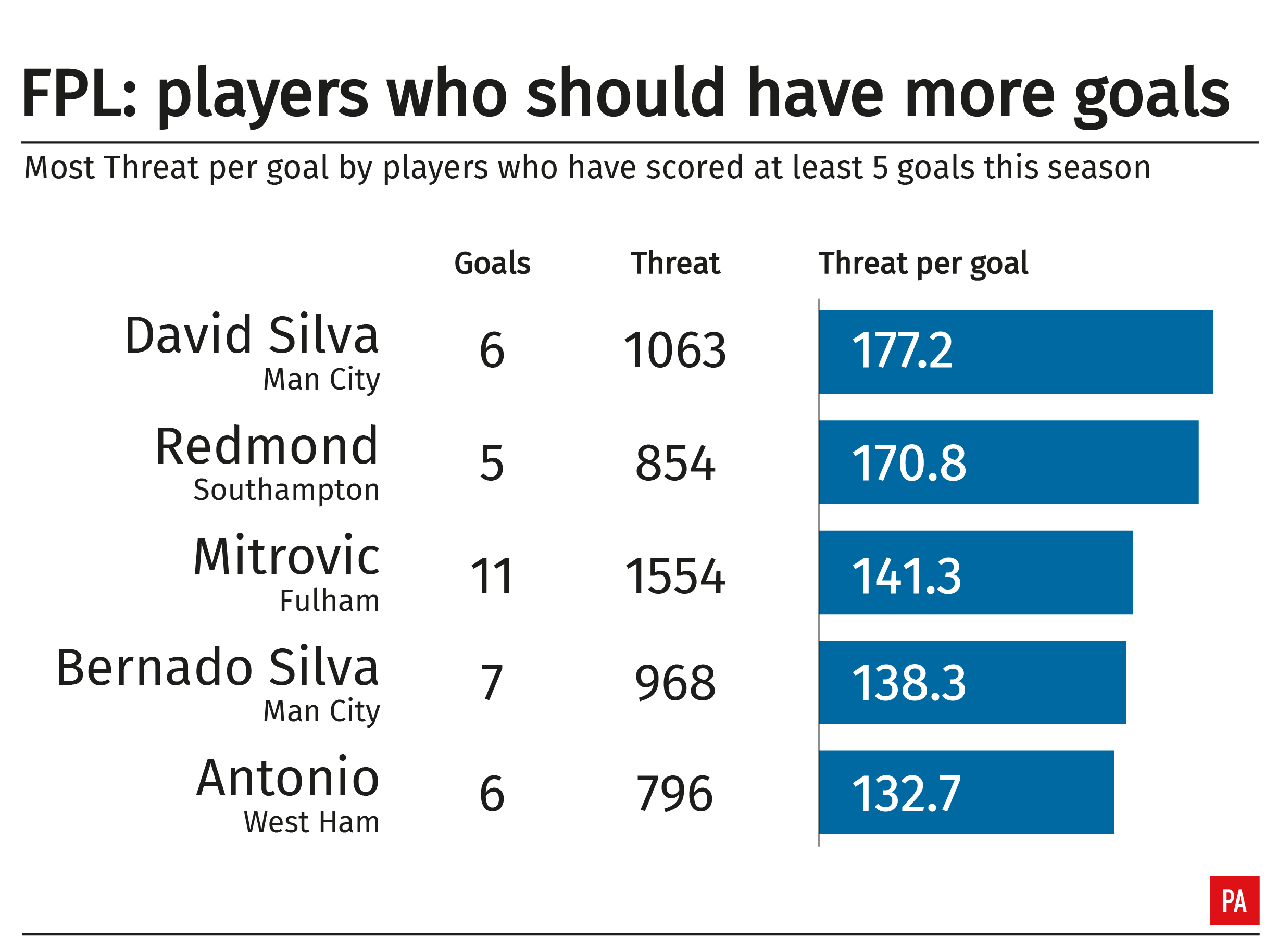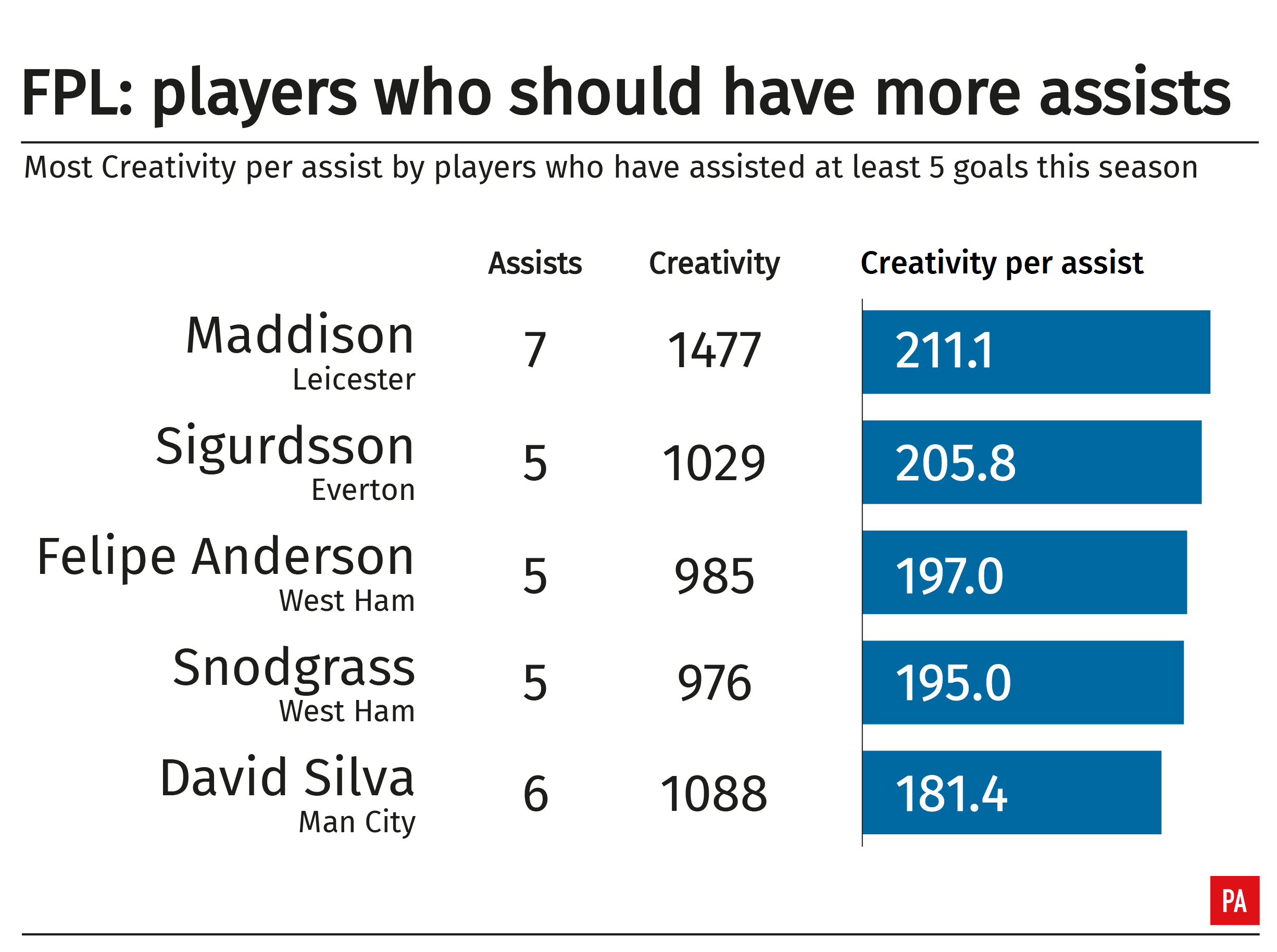Fantasy Premier League managers who scour the official website for tips each week will be aware of the game's Creativity and Threat metrics, but they might not know exactly what the figures produced mean.
According to the Premier League website, Creativity "assesses player performance in terms of producing goalscoring opportunities for others" while Threat produces "a value that examines a player's threat on goal."
In layman's terms then, Creativity scores hint at how many assists a player could expect to have registered, while Threat scores do the same but for goals.
So how should you interpret the numbers?

Even though the official site doesn't say how much Threat is equivalent to a goal, by studying a large sample it is possible to see the ratio of Threat to goals.
If you add up all the Threat and goals earned by the top 100 players since the Threat metric was introduced, you get 557 goals from 56,142 Threat, which is 100.8 Threat per goal.
That is so close to 100 that it is reasonably safe to assume that, in the FPL model, 100 Threat is equal to a goal's worth of chances – in the long run, the average player would score one goal for every 100 Threat they are awarded.
The same is true for Creativity, where the total Creativity for the top 100 players since the metric was introduced is 48,212 for 474 assists. Once again that works out to just about 100 Creativity for every assist.
So, now we know that a player 'should' score a goal for every 100 Threat they rack up, it is possible to look at the players who have racked up the most Threat per goal to see who has been presented with better scoring opportunities than their goal tally suggests.

David Silva then is a prime example of a player who has been good value for the goals he has scored and then some. With a Threat score of 1063 it could be said that a total more reflective of the chances he has found himself in would be 10 goals.
Meanwhile when it comes to assists, James Maddison leads the way for players who 'should' have registered more assists than they have done.
With only seven assists to his name but a Creativity score of 1477, the Leicester player could reasonably expect to have doubled his actual assist total.

Essentially what those metrics suggest is that someone with a strong Threat score can reasonably expect to register goals in the future, and a strong Creativity total should translate into assists, should they maintain their performance level.
With that in mind, there might be one or two FPL gems to uncover yet this season. Can you spot one?
ga('create', 'UA-72310761-1', 'auto', {'name': 'pacontentapi'});
ga('pacontentapi.set', 'referrer', location.origin);
ga('pacontentapi.set', 'dimension1', 'By Pete Fabianski and Max McLean, Press Association');
ga('pacontentapi.set', 'dimension2', '8b38101e-ebcf-43b5-bfe9-d96377778c84');
ga('pacontentapi.set', 'dimension3', 'paservice:sport,paservice:sport:football');
ga('pacontentapi.set', 'dimension6', 'story-enriched');
ga('pacontentapi.set', 'dimension7', 'composite');
ga('pacontentapi.set', 'dimension8', null);
ga('pacontentapi.set', 'dimension9', 'sport:football');
ga('pacontentapi.send', 'pageview', { 'location': location.href, 'page': (location.pathname + location.search + location.hash), 'title': 'Threat and Creativity: How to understand the FPL\u2019s unique player metrics'});







